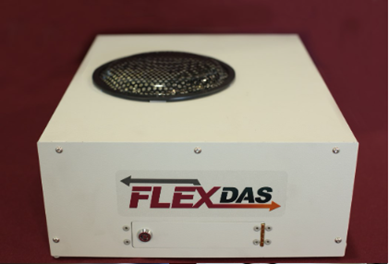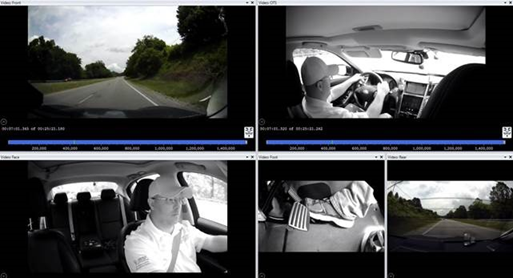Attachment Q - Simulator Data Collection
Attachment Q - VTTI simulator.docx
Human Factors Considerations in Commercial Motor Vehicle Automated Driving Systems and Advanced Driver Assistance Systems
Attachment Q - Simulator Data Collection
OMB: 2126-0080
Additional Information about the Commercial Training & Prototyping Simulator (CTAPS) and VTTI DAS Used to Collect Data
The CTAPS (Figure 1; FAAC model TT-2000-V7) is a full-mission driver- and/or hardware-in-the-loop simulation tool. CTAPS allows VTTI to simulate multiple commercial vehicle types, including dump trucks and tractor-trailers with various trailer types, lengths, and load configurations. VTTI can produce interactive and programmable traffic and roadway environments (e.g., snow, rain, construction zones, and different levels of traffic densities), trigger vehicle malfunctions (e.g., front tire blowout and air pressure loss), and develop custom SCEs. CTAPS provides a 225-degree forward field of view along with two rear video channels that can be viewed through real west coast mirrors installed on the truck cab. CTAPS can also display an overhead (birds-eye) view of the training or scenario. All simulator hardware has been updated to current high-performance standards as of early 2021.

Figure 1. VTTI’s CTAPS
Planned upgrades for the CTAPS include full ADS capabilities and remote operator control. The ADS capabilities will function to simulate real CMV ADS operations, including a button on the instrument panel to initiate ADS takeover from the driver and to disengage the ADS and return manual control to the driver. An instrument panel indicator light will alert the driver to ADS activation and any potential malfunctions. Remote operator control will include a separate PC station with steering wheel and accelerator/brake pedals for the remote operator to control the simulator. The remote operator control station will include the forward view of the roadway and mirror views along with indicators of remote operations and any failures. Data captured from the CTAPS will include the following metrics: steering input, brake input, acceleration/deceleration, speed, stop sign/traffic light violations, major and minor crashes, curb strikes, near crashes, and lane excursions.
VTTI’s DAS will allow for the collection of high-quality behavioral data throughout the ADS-driver/remote operator scenarios. In this study, VTTI will equip the CTAPS with VTTI’s FlexDAS (Figure 2). VTTI’s hardware and equipment team, which specializes in developing, manufacturing, and implementing innovative systems in transportation research, will install the data collection equipment in the CTAPS.

Figure 2. VTTI’s FlexDAS
The FlexDAS can collect, encode, and encrypt eight 1080p high-definition video streams (see Figure 3 for example photos of demonstrating the FlexDAS’ video quality). For this study, the FlexDAS will be integrated to collect data from the forward roadway simulation, the left- and right-side simulations, a driver facing camera, an over-the-shoulder camera, a remote operator facing camera (when appropriate), and a remote operator over-the-shoulder camera (when appropriate). The encrypted data are stored on a removable solid-state drive within the FlexDAS.

Figure 3. Example of High-quality Video from FlexDAS
Smart Eye’s eye-tracking solution will be used in all simulation testing. Smart Eye uses artificial intelligence to observe driver attention and alertness reliably, unobtrusively, and in real time. Smart Eye will allow the VTTI team to collect high-quality, detailed data on participant engagement in the driving/monitoring tasks, distraction from vehicle monitoring, and fatigue. At a minimum, dependent variables captured by the eye-tracking system include driver attention and duration, gaze direction, and drowsiness.
| File Type | application/vnd.openxmlformats-officedocument.wordprocessingml.document |
| Author | Matthew Camden |
| File Modified | 0000-00-00 |
| File Created | 2023-09-09 |
© 2025 OMB.report | Privacy Policy